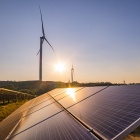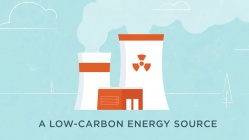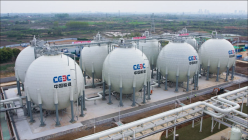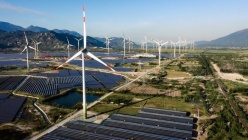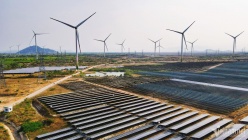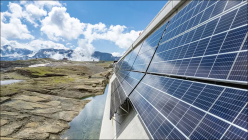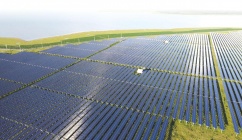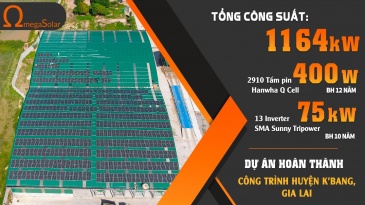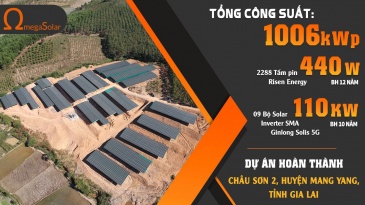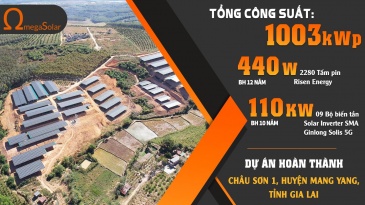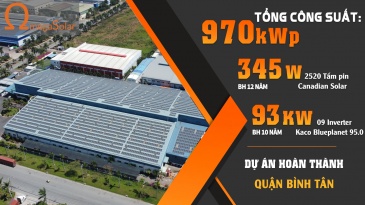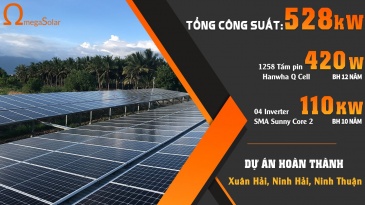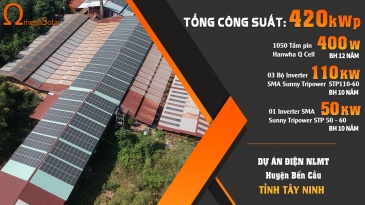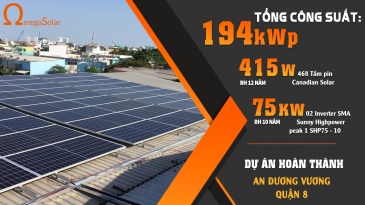Details of Vietnam's power source structure according to Power Plan VIII
What is the power source structure of the approved national electricity development plan for the period of 2021 - 2030 with a vision to 2050 (Power Plan VIII)? Let's find out together in this article!
TAccording to Decision No. 500/QD-TTg of the Prime Minister approving the National Power Development Plan for the period of 2021 - 2030, with a vision to 2050 (Power Plan VIII), the structure of Vietnam's power sources will have many changes in the direction of prioritizing the development of renewable energy, clean energy; reduce and completely eliminate coal power.
Structure of power sources until 2030
Accordingly, by 2030, the total capacity of power plants serving domestic demand will be 150,489 MW (excluding exports, existing rooftop solar power, renewable energy to produce new energy).
In which, renewable energy sources include: Onshore wind power is 21,880 MW (14.5% of total capacity of power plants); Offshore wind power is 6,000 MW (4.0%), in case the technology advances quickly, electricity prices and transmission costs are reasonable, the scale will be higher; Solar power 12,836 MW (8.5%)(excluding existing rooftop solar power), including 10,236 MW concentrated solar power sources, self-produced and self-dissipating solar power sources about 2,600 MW. Self-produced and self-dissipating solar power sources are prioritized for unlimited capacity development; Biomass electricity, electricity produced from waste 2,270 MW (1.5%), in case of sufficient raw materials, high land use efficiency, environmental treatment requirements, permissible grid infrastructure, reasonable electricity prices and transmission costs, larger scale development will be considered.
For hydroelectricity, by 2030 it will be 29,346 MW (19.5%) but it can be further developed if economic - technical conditions allow; Storage hydroelectricity 2,400 MW (1.6%);
Coal power source reached 30,127 MW (accounting for 20.0%) except for some ongoing projects. However, with coal power sources that are having difficulty in deploying, the treatment process will be updated to replace it with LNG or renewable energy sources.
Domestic gas thermal power source reached 14,930 MW (accounting for 9.9%); LNG thermal power is 22,400 MW (accounting for 14.9%); Imported power source is about 5,000 MW (accounting for 3.3%), but can be up to 8,000 MW.
In addition to traditional and renewable energy sources, the power source by 2030 will have 300 MW storage batteries (accounting for 0.2%); 300 MW flexible power source (accounting for 0.2%); Cogeneration power source, using residual heat, blast furnace gas and by-products of the technological chain in industrial facilities reached 2,700 MW (1.8%), the scale can be further increased in accordance with the capacity of industrial facilities.
Structure of power sources until 2030
According to Power Plan VIII, the total capacity of power plants by 2050 will reach from 490,529-573,129 MW (excluding export, renewable energy for new energy production).
In which, to continue to strongly develop renewable energy sources such as: onshore wind power reaching 60,050-77,050 MW (12.2-13.4%); Offshore wind power 70,000-91,500 MW (14.3-16%); Solar power is from 168,594-189,294 MW (accounting for 33.0-34.4%); Biomass electricity, electricity produced from waste 6,015 MW (1-1.2%).
Hydroelectricity sources by 2050 will be developed to reach 36,016 MW (accounting for 6.3-7.3%); Power storage is from 30,650-45,550 MW (accounting for 6.2-7.9%); Co-generation electricity, using residual heat, blast furnace gas, by-products of technological lines in industrial facilities 4,500 MW (accounting for 0.8-0.9%).
Especially, there will be no more coal power plants (not using coal for power generation) and instead will develop thermal power using biomass and ammonia from 25,632-32,432 MW (accounting for 4.5-6.6%).
Gas-fired thermal power sources include: Domestic gas-fired thermal power and LNG use is 7,900 MW (accounting for 1.4-1.6%); The domestic gas-fired thermal power plant that runs entirely on hydrogen is 7,030 MW (accounting for 1.2-1.4%); Hydrogen-fired LNG thermal power will reach 4,500-9,000 MW (0.8-1.8%); The conversion of LNG thermal power plant running entirely on hydrogen is from 16,400-20,900 MW (3.3-3.6%);
Imported power sources reach about 11,042 MW (1.9-2.3%) and development of flexible power sources reaches from 30,900-46,200 MW (6.3-8.1%).
Contact Omega Solar for the most professional advice on solar power systems:
- Phone:+84 93 45 45 950
- Email: sales@omega-solar.com
- Address: No. 3, Road No. 6B, Trung Son Residence, Binh Hung, Binh Chanh, Ho Chi Minh City, Vietnam
- Cơ chế mua bán điện trực tiếp DPPA (04/07/2024 16:22:49)
- Cơ chế mua bán điện trực tiếp của Chính phủ (04/07/2024 16:21:30)
- Russia transferred its most advanced nuclear reactor to China (25/06/2024 12:04:04)
- Repurposing Coal Power Plant Sites with Low Carbon Nuclear (25/06/2024 10:54:03)
- ‘World’s largest’ compressed air energy storage project connects to the grid in China (20/06/2024 10:09:52)
- Develop battery storage systems to contribute to ensuring sustainable energy security (13/06/2024 16:31:19)
- How to help EVN does not "lack of electricity" (15/05/2023 10:38:13)
- Install 5,000 solar panels on Europe's tallest dam (11/05/2023 16:51:16)
- The dream of storing solar power (27/04/2023 09:33:12)
- Hiệu năng chuyển đổi Hydro (27/02/2023 15:40:11)
CONTACT US


